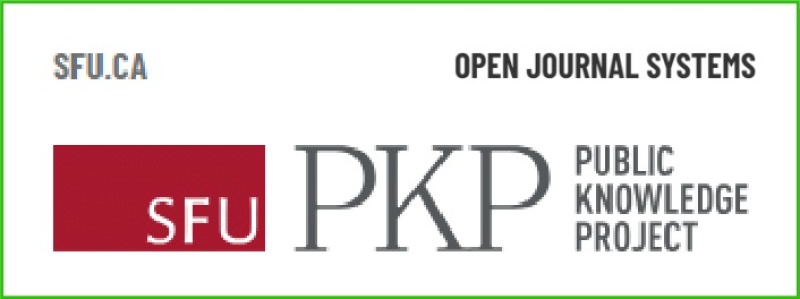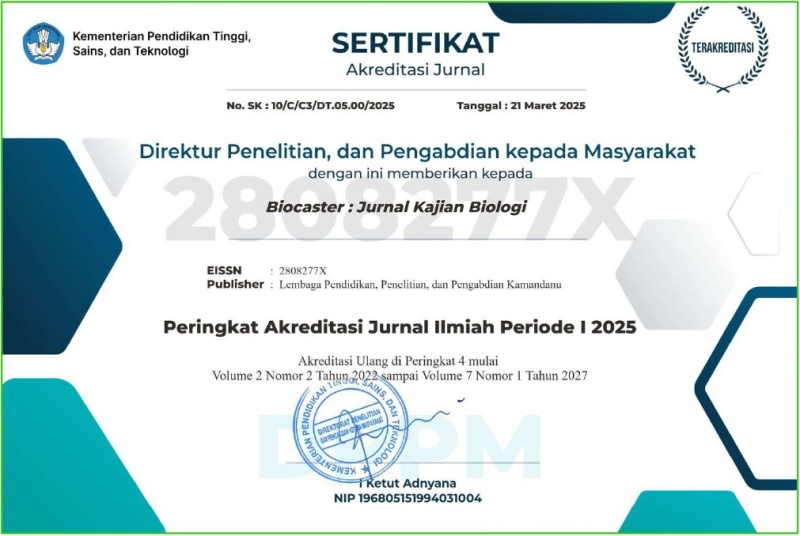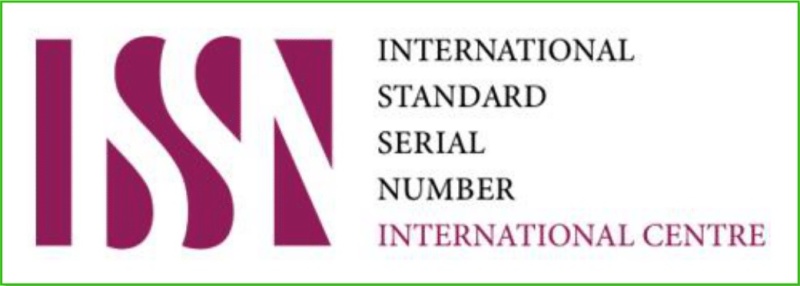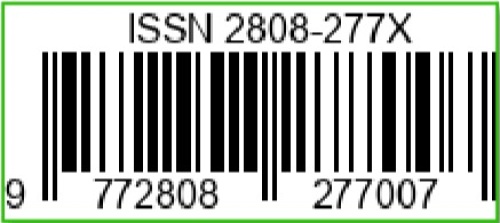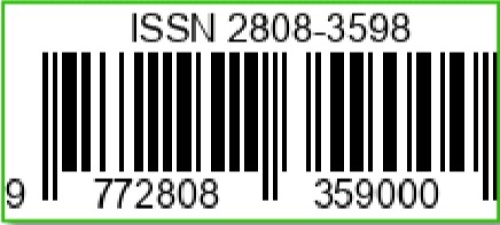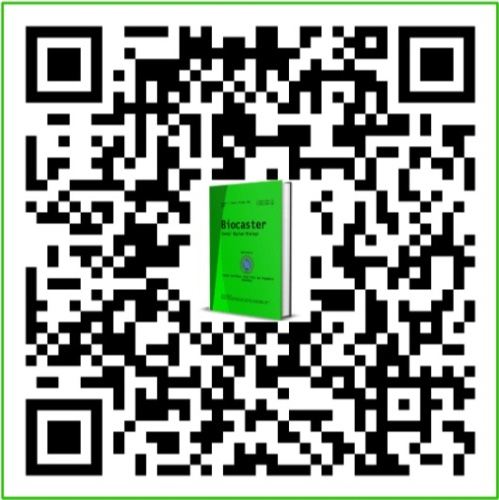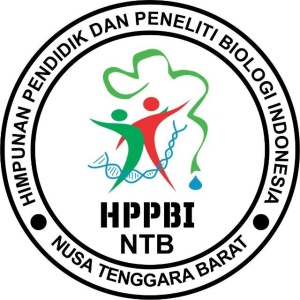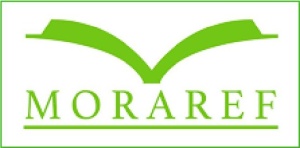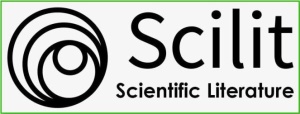Identifikasi Ordo Odonata di Kampus II Universitas Islam Negeri Sumatera Utara
DOI:
https://doi.org/10.36312/biocaster.v5i4.570Keywords:
Identification, Campus II of the State Islamic University of North Sumatra, OdonataAbstract
Odonata is one of the orders of insects that has an important role as an indicator of the quality of aquatic ecosystems as well as a component in the food chain. The diversity of Odonata species in urban areas, including campus environments, is often not optimally documented, even though this information is crucial as a basis for environmental management and conservation of local species. Campus II of the State Islamic University of North Sumatra, which has a small aquatic ecosystem, such as ponds and riparian vegetation, is a potential habitat for the existence of the Odonata order. However, until now there has been no scientific study documenting the species in the area. Therefore, this study was conducted with the aim of identifying Odonata species found in the Campus II environment of the State Islamic University of North Sumatra. This research is an exploratory research with data collection techniques using direct sampling methods in the field. Specimen collection was carried out using insect nets, visually documented through digital cameras, and identified using taxonomic determination keys as the main reference. Stationery is used for recording data during field observation. The data from the research were analyzed qualitatively using the Miles and Huberman model analysis technique which involved four systematic steps, namely data collection, data reduction, data presentation, and conclusion drawn. The results of the study showed that in the Campus II area of the State Islamic University of North Sumatra, two species of Odonata were found, namely Diplacodes trivialis from the suborder Anisoptera and Agriocnemis pygmaea from the suborder Zygoptera. These two species show adaptation to artificial aquatic habitats in the campus environment. This study concluded that even though the area is semiurban, there is still a diversity of Odonata species that needs attention. The implications of this study are expected to be an initial reference for the development of local insect biodiversity studies as well as the basis for the formulation of insect-friendly habitat management policies in university areas.
Downloads
References
Abbott, J. C., Sierra, C. A. B., Guralnick, R., Kalkman, V. J., Soriano, E. G., Gutiérrez, R. N., Paulson, D. R., Acosta, A. L., Baena, M. L., Damerow, J. E. B., Bybee, S. M., Dalzochio, M. S., Prins, W. D., Ferreira, R. A., Fleck, G., Garrison, R. W., Lohrmann, V., Monaghan, M. T., Pessacq, P., & Belitz, M. W. (2022). Diversity of Nearctic Dragonflies and Damselflies (Odonata). Diversity, 14(7), 1-18. https://doi.org/10.3390/d14070575
Ahmed, H. K. & Kareem, D. K. (2024). Morphological Identification of Dragonflies Naiads (Odonata: Anisoptera) from Temporary Ponds in Basrah Province, South of Iraq: Identification of Dragonflies from Basrah, Iraq. Iraqi Journal of Aquaculture, 21(1), 89-109. https://doi.org/10.58629/ijaq.v21i1.513
Atourrohman, M., Ulfah, M., Septiani, M., Silmi, F. I., Utami, R. T., Malimah, S. F., Widiastuti, R., Purnomo, A. D., & Setyawati, S. M. (2020). Karakterisasi dan Identifikasi Orthetrum sabina (Odonata: Libellulidae) di Lapangan Rusunawa Jerakah Purwoyoso Semarang. Jurnal Litbang Edusaintech, 1(1), 57-60. https://doi.org/10.51402/jle.v1i1.6
Bybee, S. M., Kalkman, V. J., Erickson, R. J., Frandsen, P. B., Breinholt, J. W., Suvorov, A., Dijkstra, K. D. B., Rivera, A. C., Skevington, J. H., Abbott, J. C., Herrera, M. S., Lemmon, A. R., Lemmon, E. M., & Ware, J. L. (2021). Phylogeny and Classification of Odonata Using Targeted Genomics. Molecular Phylogenetics and Evolution, 160(1), 1-15. https://doi.org/10.1016/j.ympev.2021.107115
Carballa, M. O. L., & Koroiva, R. (2024). A Special Issue on the Diversity, Ecology and Evolution of Dragonflies and Damselflies (Insecta: Odonata). Diversity, 16(2), 1-7. https://doi.org/10.3390/d16020117
Dey, R., & Pal, A. (2022). Heterospecific Pairing between Male Agriocnemis Kalinga Nair & Subramanian, 2014, and Female A. pygmaea Rambur, 1842 (Odonata: Coenagrionidae). Notulae odonatologicae, 9(6), 241-245. https://doi.org/10.60024/zenodo.4268585
Hasanah, U., Nofisulastri, N., & Safnowandi, S. (2020). Inventarisasi Serangga Tanah di Taman Wisata Alam Gunung Tunak Kabupaten Lombok Tengah. Bioscientist : Jurnal Ilmiah Biologi, 8(1), 126-135. https://doi.org/10.33394/bjib.v8i1.2560
Ilhamdi, M. L., Idrus, A. G. I. L. A., Santoso, D., Hadiprayitno, G., & Syazali, M. (2021). Species Richness and Conservation Priority of Dragonflies in the Suranadi Ecotourism Area, Lombok, Indonesia. Biodiversitas Journal of Biological Diversity, 22(4), 1846-1852. https://doi.org/10.13057/biodiv/d220430
Johari, P. R., & Jain, N. (2021). Comparative Study of Odonates in Two Selected Sites (Umed Ganj and Chatra Vilas Garden) of Kota, Rajasthan (India). Journal of Entomology and Zoology Studies, 9(1), 930-933.
Jose, J., & Vivek C. A. (2020). Introduction to Odonata: With Identification Keys for Dragonflies & Damselfies Found in Kerala. Kerala: Society for Odonata Studies.
Joshi, S., & Agashe, D. (2020). Ontogenic Colour Change, Survival, and Mating in the Damselfly Agriocnemis pygmaea Rambur (Insecta: Odonata). Ecological Entomology, 45(5), 1015-1024. https://doi.org/10.1111/een.12879
Kalkman, V. J. (2021). On the Synonymy of Agriocnemis corbeti Kumar & Prasad, 1978, with Agriocnemis pygmaea Rambur, 1842 (Odonata: Coenagrionidae). Notulae Odonatologicae, 9(8), 353-357. https://doi.org/10.60024/zenodo.570295
Lancer, B. H., Evans, B. J. E., & Wiederman, S. D. (2020). The Visual Neuroecology of Anisoptera. Current Opinion in Insect Science, 42(1), 14-22. https://doi.org/10.1016/j.cois.2020.07.002
Liberato, F. H. D., Lopez, V. M., Quinaia, T., Júnior, R. F. D. V., Samways, M. J., Juen, L., Valera, C., & Ferreira, R. G. (2024). Total Environment Sentinels: Dragonflies as Ambivalent/Amphibiotic Bioindicators of Damage to Soil and Freshwater. Science of the Total Environment, 934(1), 1-20. https://doi.org/10.1016/j.scitotenv.2024.173110
Mallick, M. A. I., & Ghorai, N. (2025). Seasonal Dynamics of Odonate Species Diversity and Abundance in West Bengal State University (WBSU) Campus, West Bengal, India. Cuadernos de Biodiversidad, 68(1), 18-29. https://doi.org/10.14198/cdbio.27683
Manu, M. K., Ashiagbor, G., Seidu, I., Groen, T., Gyimah, T., & Toxopeus, B. (2023). Odonata as Bioindicator for Monitoring Anthropogenic Disturbance of Owabi Wetland Sanctuary, Ghana. Aquatic Insects, 44(2), 151-169. https://doi.org/10.1080/01650424.2022.2108844
Maoka, T., Kawase, N., Ueda, T., & Nishida, R. (2020). Carotenoids of Dragonflies, from the Perspective of Comparative Biochemical and Chemical Ecological Studies. Biochemical Systematics and Ecology, 89(1), 1-20. https://doi.org/10.1016/j.bse.2020.104001
Nafisah, N. A., & Soesilohadi, R. H. (2021). Community Structure of Dragonfly (Ordo: Odonata) in Natural Forest and Tourist Sites Petungkriyono Forest, Central Java, Indonesia. Journal of Tropical Biodiversity and Biotechnology, 6(3), 1-9. https://doi.org/10.22146/JTBB.67328
Nasirian, H., & Irvine, K. N. (2017). Odonata Larvae as a Bioindicator of Metal Contamination in Aquatic Environments: Application to Ecologically Important Wetlands in Iran. Environmental Monitoring and Assessment, 189(1), 1-18. https://doi.org/10.1007/s10661-017-6145-6
Putra, I. L. I., & Putri, W. A. (2023). Keanekaragaman Jenis Capung (Hexapoda: Odonata) di Sekitar Kampus 4 Universitas Ahmad Dahlan, Yogyakarta. Metamorfosa : Journal of Biological Sciences, 10(1), 84-95. https://doi.org/10.24843/metamorfosa.2023.v10.i01.p09
Rahmawati, W. A., & Budjiastuti, W. (2022). Pengaruh Faktor Lingkungan terhadap Indeks Keanekaragaman dan Morfologi Capung (Ordo: Odonata) di Kawasan Hutan Kota Surabaya. Lenterabio : Berkala Ilmiah Biologi, 11(1), 192-201. https://doi.org/10.26740/lenterabio.v11n1.p192-201
Rodríguez, F. P., Rodríguez, L. R., Palacino, D. A., & Rivera, A. C. (2020). Larval Development and Foraging Behavior of Erythrodiplax abjecta (Rambur) (Anisoptera: Libellulidae) in Captivity. Journal of Asia-Pacific Entomology, 23(4), 1030-1040. https://doi.org/10.1016/j.aspen.2020.08.014
Rohman, A., Subchan, W., Faradilla, Y., & Firmansyah, P. (2025). Dragonfly (Odonata) Community Structure in Bandealit Resort, Meru Betiri National Park. Jurnal Biodjati, 10(1), 90-104. https://doi.org/10.15575/biodjati.v10i1.38986
Setyawati, M., & Triatmanto, T. (2022). Keanekaragaman Capung (Odonata) di Kawasan Gunung Api Purba Nglanggeran Kabupaten Gunungkidul. Bioscientist : Jurnal Ilmiah Biologi, 10(2), 809-817. https://doi.org/10.33394/bioscientist.v10i2.5872
So, K. S., & Won, C. G. (2022). The First ‘Megapodagrionidae’ (Odonata, Zygoptera) from the Lower Cretaceous of Democratic People's Republic of Korea. Cretaceous Research, 130(1), 1-20. https://doi.org/10.1016/j.cretres.2021.105054
Solihah, E. E., Utami, S., & Dewi, N. K. (2022). Penyusunan Ensiklopedia Berbasis Keanekaragaman Capung (Odonata) di Kawasan Air Terjun Teleng Ngawi sebagai Sumber Belajar Kelas X. Jems : Jurnal Edukasi Matematika dan Sains, 10(2), 424-430. https://doi.org/10.25273/jems.v10i2.13373
Sonia, S., Azzahra, A. N. A., Anissa, R. K., Jamilah, Y. M., & Rahayu, D. A. (2022). Keanekaragaman dan Kelimpahan Capung (Odonata: Anisoptera) di Lapangan Watu Gajah Tuban. Bio-Sains : Jurnal Ilmiah Biologi, 1(2), 1-11. https://doi.org/10.5281/zenodo.7478317
Susanto, M. A. D., Zulaikha, S., Bahri, S., Firdhausi, N. F., & Tyastirin, E. (2022). Community Structure of Dragonfly (Insecta: Odonata) in Pond Habitat at Sumur Panguripan Cultural Reserve, Surabaya, Indonesia. IOP Conference Series : Earth and Environmental Science, 976(1), 1-10. https://doi.org/10.1088/1755-1315/976/1/012005
Tustiyani, I., Utami, V. F., & Tauhid, A. (2020). Identifikasi Keanekaragaman dan Dominasi Serangga pada Tanaman Bunga Matahari (L.) Helianthus annuus dengan Teknik Yellow Trap. Agritrop : Journal of Agricultural Science, 18(1), 89-97. https://doi.org/10.32528/agritrop.v18i1.3258
Veseli, M., Rožman, M., Vilenica, M., Petrović, M., & Previšić, A. (2022). Bioaccumulation and Bioamplification of Pharmaceuticals and Endocrine Disruptors in Aquatic Insects. Science of the Total Environment, 838(2), 1-20. https://doi.org/10.1016/j.scitotenv.2022.156208
Yudiawati, E., & Oktavia, L. (2020). Keanekaragaman Jenis Capung (Odonata) pada Areal Persawahan di Kecamatan Tabir dan di Kecamatan Pangkalan Jambu Kabupaten Merangin. Jurnal Sains Agro, 5(2), 71-76. https://doi.org/10.36355/jsa.v5i1.316
Downloads
Published
How to Cite
Issue
Section
License
Copyright (c) 2025 Adi Hartono, Nanda Fahira, Rizka Ramadhani Dalimunthe, Dea Wahdania Munthe, & Sella Ayundari

This work is licensed under a Creative Commons Attribution-ShareAlike 4.0 International License.
-
Attribution — You must give appropriate credit, provide a link to the license, and indicate if changes were made. You may do so in any reasonable manner, but not in any way that suggests the licensor endorses you or your use.
-
ShareAlike — If you remix, transform, or build upon the material, you must distribute your contributions under the same license as the original.


